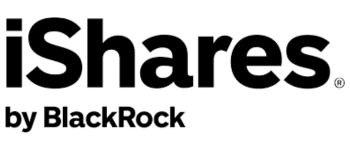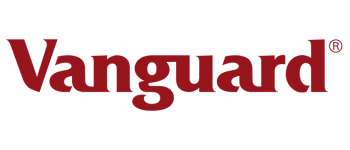Diversification and Automatic Rebalancing at the Click of a Button – Let’s Look at These Canadian All-In-One ETFs
Key takeaways
Customization for Risk Tolerance – Ranging from all-equity to conservative balanced options, these ETFs cater to different investor risk preferences.
All-in-One ETFs Provide Diversified Portfolios – These ETFs simplify investing by offering a balanced mix of equity and fixed income exposure in a single fund.
Low-Cost and Passive Management – Most of these ETFs have low expense ratios and follow a passive index-based strategy, making them cost-efficient for long-term investors.
One ETF I like way better than the ones on this list.Exchange-traded funds are exploding in popularity recently, and for good reason. They’re flexible, allow instant diversification among a wide variety of assets, and often charge much more attractive fees than traditional mutual funds.
Among the variety of ETFs available, all-in-one ETFs stand out for their simplicity and convenience, delivering a one-click method to a diverse portfolio for Canadians. Many Canadians have way too much Canadian exposure inside of their portfolios, which isn’t optimal. It can end up leaving us with a poorly balanced portfolio and too exposed to a single economy, especially a cyclical one like Canada.
All-in-one ETFs are designed to provide a balanced and diversified portfolio within a single investment product. They widen the scope of attention, focusing on entire markets. This is in stark contrast to some ETFs that narrow the field of view to one industry, such as gold ETFs.
All-in-one ETFs typically consist of a mix of stocks, bonds, and other assets, adjusting the allocation based on an investor’s risk tolerance and investment goals.
This approach allows Canadians to effortlessly access a well-rounded investing strategy without the need to manage multiple individual funds. As the demand for efficient, diversified investing solutions grows in Canada, numerous all-in-one ETFs have emerged. This will very likely save a person from the need for robo-advisors, human advisors, or constant rebalancing.
These funds help people shift from having to review ETFs for specific niches, like Canadian bank ETFs, and instead capture entire markets and gain increased diversification.
This article will discuss all of the possible all-in-one ETFs you can buy here in Canada from some of the largest ETF providers around. Hopefully, by the end of it, you’ll find one that fits your tolerance for risk and investment goals.
What are the best all-in-one ETFs in Canada today?
- iShares Core Equity ETF Portfolio (XEQT)
- Vanguard All-Equity ETF Portfolio (VEQT)
- BMO All Equity ETF (TSE:ZEQT)
- Vanguard Balanced ETF Portfolio (VBAL)
- iShares Core Balanced ETF Portfolio (XBAL)
- BMO Balanced ETF (ZBAL)
- BMO Conservative ETF (ZCON)
- BMO Growth ETF (ZGRO)
- Fidelity All-in-One Equity ETF (FEQT.NO)
Types of all-in-one ETFs
All-in-One ETFs combine several asset classes and strategies into a single fund, providing investors with a diversified and well-balanced portfolio. Let’s go over the various types of all-in-one ETFs available in the Canadian market, focusing on growth, equity, and conservative options.
Equity ETFs
These are designed for investors seeking capital appreciation over a long time horizon. These funds generally have a higher allocation to equities, with a smaller portion in fixed-income securities.
These products provide exposure to a diverse range of Canadian and global stocks, with minimal allocation to bonds.
These funds can include domestic, international, or global equities, allowing investors to diversify across geographic regions and sectors. The All-Equity ETF Portfolio (XEQT) is an example of an equity-focused portfolio, providing investors with a comprehensive mix of Canadian, U.S., and international stocks.
Balanced ETFs
These strike a balance between risk and reward by allocating assets across both equities and fixed-income securities. These funds offer a mix of capital appreciation and income generation, making them suitable for investors with a moderate risk tolerance.
Conservative ETFs
More conservative ETFs focus primarily on capital preservation and income generation, with a more minor emphasis on capital growth. These funds usually have a higher allocation to fixed-income securities, such as bonds, and a lower allocation to equities.
These portfolios offer diversified exposure to global bonds and equities, with an emphasis on Canadian fixed-income securities.
Canadian investors have numerous All-in-One ETF options catering to various investment objectives and risk preferences. By selecting the appropriate All-in-One ETF, investors can easily create diversified, well-balanced portfolios tailored to their specific needs.
Top All-In-One ETFs in Canada
Low-cost global equity exposure.
iShares Core Equity ETF Portfolio (XEQT)

XEQT is a globally diversified ETF investing in a mix of Canadian, U.S., international, and emerging market equities. It is designed for investors seeking long-term capital appreciation with no fixed income component.
High equity exposure with global diversification.
Vanguard All-Equity ETF Portfolio (VEQT)

VEQT provides 100% equity exposure through a mix of Canadian, U.S., international, and emerging market stocks. It is a one-ticket solution for aggressive investors.
Newest all-equity balanced ETF option.
BMO All-Equity ETF (ZEQT)

ZEQT provides exposure to a diversified global equity portfolio, similar to VEQT and XEQT but with a unique allocation strategy focusing on North American stocks.
60/40 stocks-to-bonds allocation.
Vanguard Balanced ETF Portfolio (VBAL)

VBAL is a balanced ETF portfolio investing in a 60% equity and 40% fixed income mix, offering a moderate risk profile.
Another 60/40 balanced option.
iShares Core Balanced ETF Portfolio (XBAL)

Similar to VBAL, XBAL provides a 60% equity and 40% fixed income allocation with slight differences in holdings and methodology.
60/40 balanced strategy with a Canadian tilt
BMO Balanced ETF (ZBAL)

BMO Balanced ETF (ZBAL) provides a 60% equity / 40% fixed income allocation, offering a middle ground between growth and stability. It is designed for investors who want broad diversification with automatic rebalancing, making it a hands-off, long-term investment option. Compared to other balanced ETFs, ZBAL has a slightly higher Canadian exposure, which may appeal to domestic investors.
Lower-risk, income-focused balanced portfolio
BMO Conservative ETF (ZCON)

ZCON is a 40% equity / 60% fixed income ETF, designed for conservative investors who prioritize capital preservation and income over growth. This ETF provides exposure to Canadian, U.S., and international stocks while maintaining a significant allocation to bonds for stability. It is best suited for retirees or investors with a low risk tolerance who want to minimize market volatility.
Growth-focused 80/20 balanced portfolio
BMO Growth ETF (ZGRO)

ZGRO is an 80% equity / 20% fixed income ETF designed for growth-oriented investors who can handle moderate volatility. It offers global diversification, broad sector exposure, and a small bond allocation for some downside protection. This ETF is best suited for investors with a long-term horizon who want higher capital appreciation without going all-in on equities.
Globally diversified equity portfolio with strategic factor exposures
Fidelity All-in-One Equity ETF (FEQT.NO)

The Fidelity All-in-One Equity ETF (FEQT) aims to achieve capital growth by investing primarily in underlying Fidelity ETFs that provide exposure to a diversified portfolio of global equity securities. This ETF offers investors a comprehensive equity solution with strategic allocations to various investment factors, including momentum, value, and low volatility. Additionally, it includes a small allocation to cryptocurrencies, providing exposure to digital assets.
Selecting an ETF based on risk tolerance
When choosing an ETF, it is crucial to consider an individual’s risk tolerance. In fact, most of these ETFs are structured to provide just that: appropriate risk profiles for the investor.
Risk tolerance refers to the degree of variability in investment returns one is willing to accept. One must be aware of risk tolerance to create a diversified portfolio that matches personal investment objectives and financial goals.
One way to assess risk tolerance is by examining the ETF’s asset allocation, as I reviewed thoroughly in this article.
ETFs with a higher proportion of equity holdings are typically more volatile and carry a higher risk, even some dividend ETFs. On the flip side, those with a greater share of fixed-income securities are more stable, offering lower returns but reduced risk.
For investors with a low-risk tolerance, say those looking for retirement income, selecting ETFs with a higher percentage of fixed-income securities, such as government and corporate bonds, is advisable.
These securities offer regular interest payments and are generally less susceptible to market fluctuations. If you’re looking to research some fixed income options, I do have an article on the top Canadian bond ETFs. These types of ETFs serve as a reliable source of income and help preserve capital for risk-averse investors.
On the other hand, investors with a higher risk tolerance may prefer ETFs with more significant equity exposure, as these can potentially provide higher returns over the long term. These investors are more comfortable with the volatility of equity markets. They can withstand short-term losses in pursuit of long-term capital growth.
Balancing risk and potential returns is vital in creating a diversified portfolio. In other words, investors should seek to combine ETFs with a range of asset allocations, including both equity and fixed-income holdings, to strike an optimal balance. These all-in-one funds do just that.
What account should I have these all-in-one ETFs in?
For the most part, the global exposure of these ETFs and the fact they have USD holdings held in Canadian-domiciled ETFs will have you paying withholding taxes on the distributions even in a TFSA or RRSP.
But, keep in mind that would only be on the dividend portion of the distribution, and these funds are primarily designed for investors to realize capital gains over the long term from holding them. So, I wouldn’t fret too much about the withholding taxes if you purchase one of them, especially with their long-term diversification benefits.
